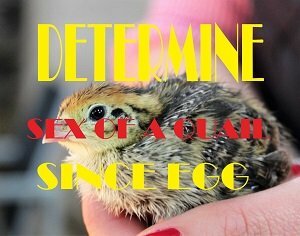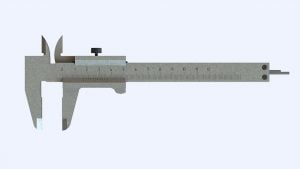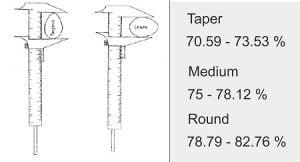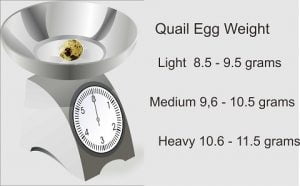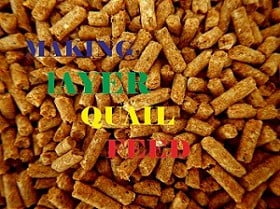We have some step how to identify quail gender since they are still in their eggs. Although this method has had some questionable success, some have succeeded in implementing it.
This method will be needed for quail breeders who want to produce DOQ (day of quail). If it is to produce eggs, then we don’t need to bother doing this.
The first is to produce DOQ, the resulting eggs must be hatched.
Maintenance management is slightly different from quail eggs for consumption. To produce hatching quail eggs, the eggs must be fertile.
This fertile condition must include male quails in one cage with female quails.
Starting from here, I think we can produce fertile quail eggs.
If our goal is to produce DOQ, then the highest demand is laying quail seeds.
To produce laying quail seeds, the DOQ that is most desirable is DOQ which is female.
There are ways or tricks that can be used to determine the sex of the quail from the shape and weight of the eggs.
This method will indeed be a bit inconvenient because you have to select quail eggs one by one and a little additional tools.
Additional tools needed are calipers.
Selecting the sex of the quail can be done after the eggs hatch. Usually, this is done after the quail has entered the grower phase.
However, the ratio between male and female quail is around 50:50.
In addition to determining male and female quail, this method can also determine fertile and non-fertile eggs.
So, the eggs that enter the incubator can be very high hatch rate.
While eggs that do not qualified can be directly used as consumption eggs.
The real quail egg shape
The shape of quail eggs can be categorized into three forms.
First are taper eggs, medium eggs, and round eggs.
The explanation is like this.
Please take a look at the egg picture below. If you pay close attention, the shape of the quail eggs has a slight difference.
If the results between 70.59% – 73.53%, then quail eggs can be said to be sharp eggs.
The medium and round egg categories can be seen in the picture above.
If the result is 100%, it means that you are not measuring quail eggs, but marbles.
Almost the same as the shape of the egg, egg weight is also called light, medium, and heavy.
How to identify quail gender with shape and weight of an egg
There may be an assumption that the shape of quail eggs influences the fertility rate.
Eggs that are tapered have higher hatchability while eggs that are rounder are not.
But this is still a bit confusing. From several studies that have been conducted, the results show a difference in results.
Later we will see at the end of this article.
Likewise with egg weight. Heavier quail eggs are considered to have high hatchability.
Also, heavier eggs were thought to produce more male DOQ whereas lighter eggs tended to produce female DOQ.
Instead of focusing on egg shape and weight, focus on nursery management from the start.
Egg shape and weight in my opinion are only indirect factors. The results were incurable.
No way can be done so that the quail can produce sharp or round eggs.
Is there any?
It is better if you focus on selecting quality seeds and good maintenance management.
You can read about it in the article below.
Quail livestock management.
In my opinion, good management from the start is more effective than having to select quail eggs one by one.
Because of the time it takes to calculate the length, width, and weight of quail eggs, then calculating the egg index takes at least 20 seconds.
If you have to select 800 eggs, the time needed is 16,000 seconds, or about 4 hours more.
Imagine spending 4 hours every day just selecting eggs to hatch.
Very troublesome right?
If you are still interested in reading the research, please continue reading this article.
The research is quite interesting, and hopefully, it will provide some benefits.
Research on the shape of quail eggs
We discuss the first research on quail egg shape. [1] This study was to determine whether there was a relationship between egg shape taper on egg fertility, hatchability, hatching time, and hatching weight.
For the results, I will only discuss egg fertility and hatchability.
This is because of the length of time and weight of hatching have nothing to do with the shape of the egg.
The fertility and hatchability of eggs can be seen in the table below.
|
Variable |
Egg Shape |
||
|
Taper |
Moderate |
Round |
|
| Egg fertility (%) | 94.28 | 82.85 | 88.57 |
| Hatchability of eggs (%) | 93.93 | 93.1 | 77.41 |
Although the difference is quite a bit, the taper egg shape has the highest fertility and hatchability values.
Even so, the researchers conclude that the shape of the eggs does not affect the hatchability and fertility of quail eggs.
I think it is necessary to make a few points below.
The total number of quail eggs used in the study was only 105 eggs.
The number of taper, medium, and round eggs is 35 each.
Of all the eggs that hatch, whether sharp, medium, and round, the total fertility is still quite high, namely around 88%.
So, if you had to distinguish between only sharp or round eggs to hatch, I guess it’s a waste of time and effort.
After all, the results if you put everything into the hatching machine, the number of hatchlings is still good.
Now we will look at research from different researchers.
This study used 162 quail eggs. Then the quail eggs are grouped based on their shape and weight as in the study above.
The results were the same as in the first study. That is, the shape of the egg has nothing to do with DOQ sex, hatching weight, and hatching time. [2]
However, there is one interesting thing from this research. Namely, the weight of quail eggs affects the sex of the resulting DOQ.
The results I will discuss in the next section.
The weight of quail eggs is synonymous with quality
Don’t pay too much attention to the shape of the egg. It doesn’t really matter whether the quail eggs are tapered, medium, or round.
Because quality in eggs is not the point.
The quality of the eggs actually comes from the quality of the seeds. Males, broodstock, genetics, feed, and management.
However, quality eggs are usually indicated by their egg weight.
Heavier eggs, however, are of better quality than lighter eggs.
From the following studies, all of them provide almost the same conclusion.
Although quail eggs give better results, the difference between medium and light eggs is not that much.
It needs to be understood more, that a light egg does not mean the egg is bad. And heavy eggs are good eggs.
All three of these light, medium and heavy eggs are still in the normal egg range.
All of them still have the same chance of being hatched. Provided, the quail eggs come from good seeds and management.
Heavy eggs, male quail contents
Lastly, this is for entertainment information only. That a heavy egg will have a male DOQ.
There is indeed a research journal that shows such results. [2]
From 54 light-sized quail eggs, 31 were hatched.
What percentage is it that hatches? Only 57%. Quite a bit, right?
Of the 31 eggs that hatched, 29 were females DOQ and 2 males DOQ.
Meanwhile, for medium-sized eggs, of the 54 eggs that hatched, 33 were. The hatching percentage is higher than that of light eggs.
Of the 33 items, 15 were male DOQ and 18 were female DOQ.
For heavy eggs, the number of eggs hatched is only 28. In fact, the least.
However, of the 28 items, 2 were female DOQ and the rest were male DOQ.
Now we know
Now we know that the quality of eggs in quail is determined by the quality of the seeds and their care management.
The management can be read in this article.
Not on the shape and weight of the egg itself.
Indeed, there are scientific studies that classify quail eggs based on their shape and weight.
But in my opinion, it is still limited to a theoretical study.
From several research journals I have read, the results are still inconsistent.
The results of one study are like this, while other studies have different results. It will be confusing if I convey them one by one.
Alright, hopefully, this article will be useful. See you again in my next articles.
Thank you so much for taking the time to stop by. Oh yes, please share if you have experience hatching eggs in the comments column below.
 JOYNIM FARM Goat Farming, Cattle Farm, Laying Hens, Quail Farm, Gardening
JOYNIM FARM Goat Farming, Cattle Farm, Laying Hens, Quail Farm, Gardening
